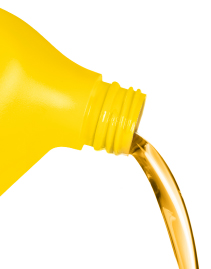According to Kline, estimated global finished lubricant consumption in 2010 was 34.6 million tones, with additive consumption accounting for 3.7 million tons valued at $10.3 billion. Within lubricant additives, dispersants, viscosity index-improving agents (VII) and detergents were the top three function classes accounting for 68% of total consumption. Other function classes analyzed include corrosion inhibitors, antiwear, emulsifiers, friction modifiers, antioxidants. Kline forecasts global lubricant additive consumption to grow at 3.2% per year to reach 4.3 billion tons by 2015, but warns that not all function classes will grow uniformly.
Changes in lubricant additive consumption have been and will continue to be driven by finished lubricant consumption, but also by regulatory pressure to reduce tail-pipe emissions. Reduction of tail-pipe emissions has been targeted by improving finished lubricants quality levels and through a series of recently developed and implemented technologies. Adaptation to these new quality requirements and technologies has impacted differently upon the consumption of various additive function classes, bringing some up, and sending others at the bottom of the charts.
In the Heavy Duty Motor Oil (HDMO) application, which accounts for almost a quarter of the global lubricant additive demand, for instance, the use of the Exhaust Gas Recirculation (EGR) system -aimed at reducing nitrous oxid (NOx) emissions- has generated a higher level of consumption for dispersants to deal with the additional soot outputted by the system, and an increase in TBN treatment to handle the excess acids the system creates. Similarly, Diesel Particular Filters have been introduced to reduce particulate matter emissions. The channels of these filters get easily clogged with ash. In order to maximize the interval between the cleaning of these filters, the ash content in HDMO must be minimized. As detergents are the main contributors for ash, for compatibility with the Diesel Particular Filters, the detergent treat has come down. Another example is the use of biodiesels who have poor oxidative resistance and tend to create sludge, hence the increase in antioxidants and dispersants levels used in formulations.
In the Passenger Car Motor Oil (PCMO) application that accounts for another 20% of the global lubricant additives consumption we discover a comparable picture. Fuel improvement economy in PCMO is targeted mainly through a transition to lighter viscosity grades. This measure attracts an increase in VII and friction modifiers levels in lubricant formulations. Higher quality levels for the finished lubricants translate into increased oil durability and hence extended drain intervals. An extended drain-interval attracts in its turn the need for an increase in the use of antioxidants and dispersants to retard oxidation, and clean the accumulated sludge in order to further maximize the window between refills. Of course, compatibility with emission control devices such as Diesal Particular Filters applies to PCMOs as well, driving like in the case of HDMO a decrease in detergent treat.
Looking forward to 2015, Kline sees a composite future for the different function classes within lubricant additives. While the overall global lubricant additive demand will grow with 3.2% per year, demand for antioxidants will go up with around 5% per year, friction modifiers with about 4%, dispersants and VIIs with around 3.4%. Other classes that are expected to experience a growth above the average are PPDs, corrosion inhibitors, and emulsifiers. By contrast, detergents, but also EPs and antiwear will grow at a rate below 3%.
To learn more about the forecast evolution of the various additive product classes in the HDMO, PCMO, ATF, Gear Oil, Tractor Hydraulic Fluid, Metalworking Fluids and General Industrial Oils application, listen to this insightful web-presentation delivered by Kline’s Petroleum Industry Manager, Milind Phadke. Contact us for password.
Global Lubricant Additives 2010: Market Analysis and Opportunities is a comprehensive analysis of the global market for lubricant additives focused on estimating additive consumption by functional class and additive chemistry, product quality and formulation trends, market developments, challenges, and business opportunities in every important lubricant-consuming country in the world.

